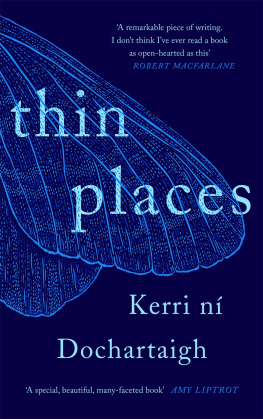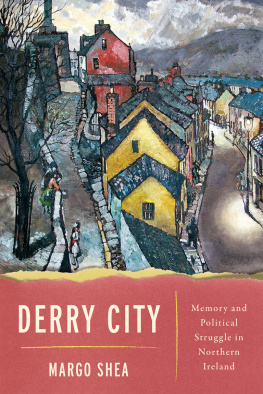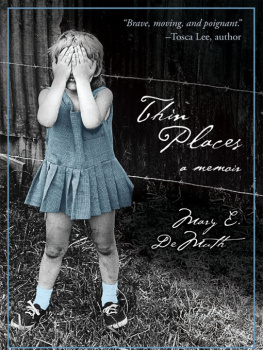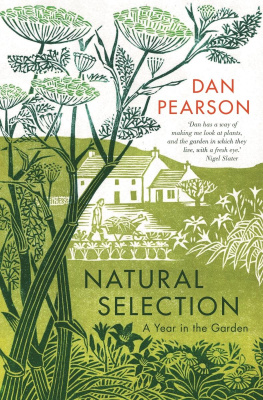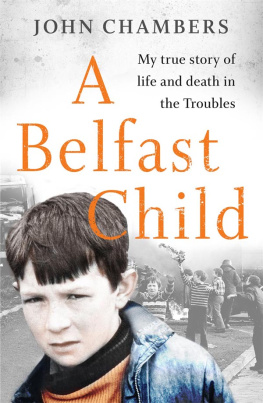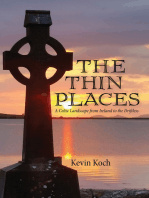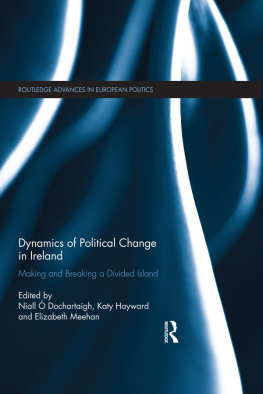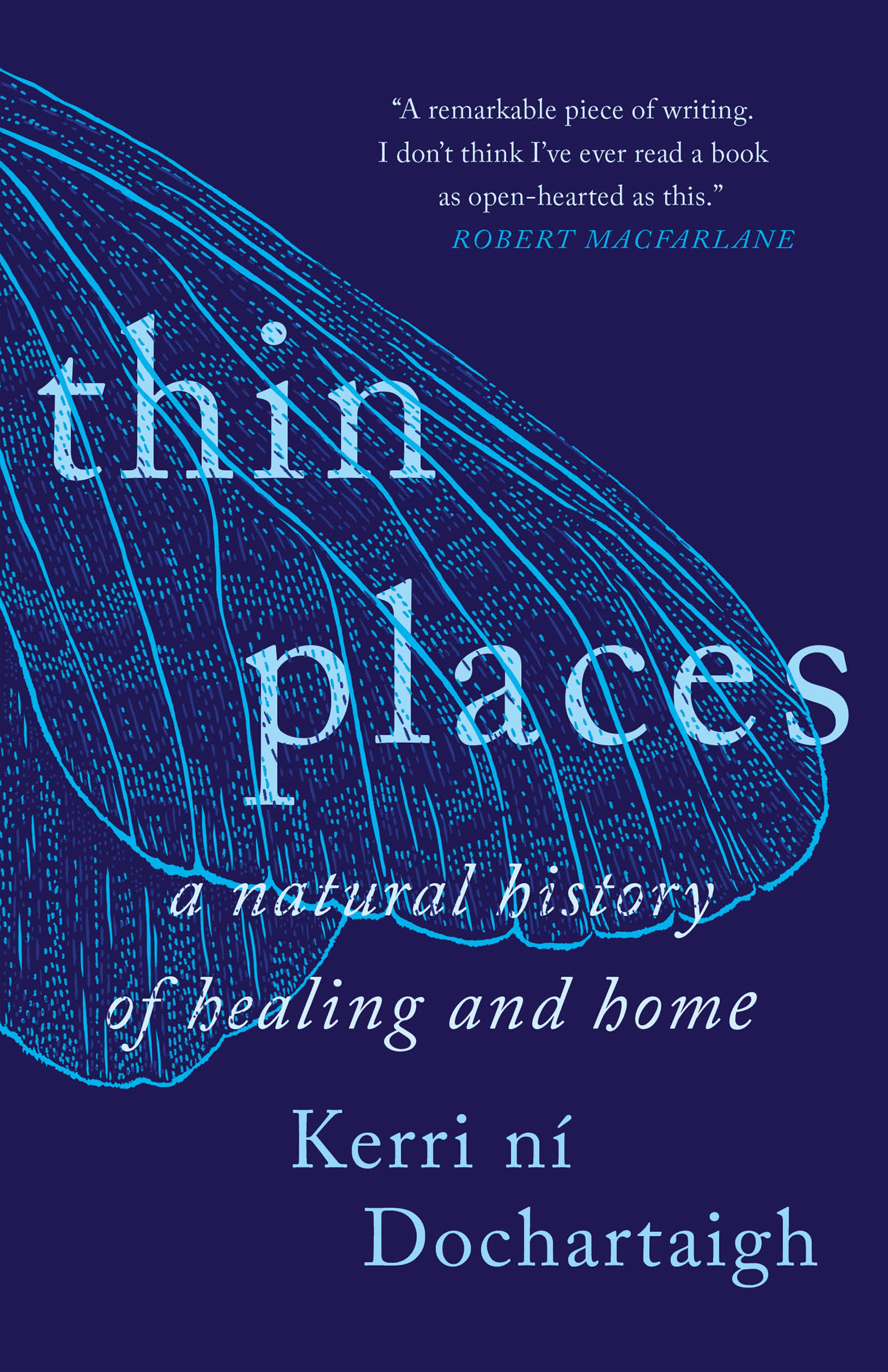Contents
Guide
Pagebreaks of the Print Version
thin places
a natural history of healing and home

Kerri n Dochartaigh
milkweed editions
2021, Text by Kerri n Dochartaigh
First published by Canongate Books Ltd, United Kingdom, 2021.
All rights reserved. Except for brief quotations in critical articles or reviews, no part of this book may be reproduced in any manner without prior written permission from the publisher: Milkweed Editions, 1011 Washington Avenue South, Suite 300, Minneapolis, Minnesota 55415.
(800) 520-645
milkweed.org
Published 2022 by Milkweed Editions
Printed in Canada
Cover design by Gill Heeley
Author photo by Manus Kenny
22 23 24 25 26 5 4 3 2 1
First US Edition
Library of Congress Cataloging-in-Publication Data
Names: Dochartaigh, Kerri n, 1983- author.
Title: Thin places / Kerri n Dochartaigh.
Description: First U.S. edition. | Minneapolis, Minnesota : Milkweed Editions, 2022. | First published by Canongate Books Ltd, United Kingdom, 2021. | Summary: Both a celebration of the natural world and a memoir of one familys experience during the Troubles, Thin Places is a gorgeous braid of two strands, one wondrous and elemental, the other violent and unsettling, sustained by vividly descriptive prose (The Guardian)-- Provided by publisher.
Identifiers: LCCN 2021030636 (print) | LCCN 2021030637 (ebook) | ISBN 9781571311955 (hardcover) | ISBN 9781571317698 (ebook)
Subjects: LCSH: Dochartaigh, Kerri n, 1983- | Derry (Northern Ireland)--Biography. | Derry (Northern Ireland)--Social life and customs--20th century.
Classification: LCC DA995.L75 A3 2022 (print) | LCC DA995.L75 (ebook) | DDC 941.6/2--dc23
LC record available at https://lccn.loc.gov/2021030636
LC ebook record available at https://lccn.loc.gov/2021030637
Milkweed Editions is committed to ecological stewardship. We strive to align our book production practices with this principle, and to reduce the impact of our operations in the environment. We are a member of the Green Press Initiative, a nonprofit coalition of publishers, manufacturers, and authors working to protect the worlds endangered forests and conserve natural resources. Thin Places was printed on acid-free 100% postconsumer-waste paper by Friesens Corporation.
for the people,
for the places,
for those lost,
for those moths.
Contents
Prologue
WHEN I FIRST SEE HER she is as still as a found stone, in an ancient and hidden place. She stands out, a quiet caller of the eye her markings blend in so delicately in this place, against the grasses and the thistle, the sand that marks the Atlantic Ocean from the land. I am at An tSribh Shroove Beach completely alone, miles across the border from my home in Derry, when we cross one anothers path.
She looks so calm, unstirring in spite of the winds that now set the tall grasses on the beach to dance. She is so beautiful I may even call her celestial that I almost feel I have no right to be here. In this moment, in this place, with this graceful wonder, what part can I play in her story, in the narrative of this ethereal offering of a creature? I begin to feel that I am not, in fact, even seeing her. It is more an act of witness. There is so little action in the small part I play on this near-winter morning, at a part of the Inishowen Peninsula where Lough Foyle meets the wild Atlantic, at the edge-land of Donegal, in one of the most northerly places on the island of Ireland.
We have found ourselves in a state of turmoil here, in the North of Ireland, and all the other parts that make up the United Kingdom are caught up in the same storm. It is November 2019, and next month the first Christmas Election in decades will take place. The air has been charged for many months with worry and confusion but none of that seems real, here, amidst such silent serenity.
She dances. She is the centre of it all, the still point on the map, a heavenly and delicate thing, too sacred for words. I am only the beholder, here, and I am drinking it all in. I bathe in her silent, gossamer grace. I watch her for what feels like a hundred years one hundred years and this one, solitary day. The winter sun is high enough above the lighthouse to make the reeds double on themselves. Their silhouettes now join her in shadow play; they seem as if they are weaving themselves together and dancing in time with her. I am on my own, on the outside, looking in at the reeds and the moth; as if I am on the other side of an ice-sculpted lake or a mirror. They are right here beside me yet they feel so completely out of reach.
I tiptoe around the edges, and I feel myself outside time, as well as place. Now I am in both and in neither all at once.
I gratefully wait on the threshold, holding my breath as the reeds dance, grass goddesses on the hushed dunes, beside an ethereal, exquisite leamhan.
A winter moth, in a weightless, willowy place.
I begin to dry myself. The water today was icy and the seas waves tall and white as snow, like mountains she had given birth to overnight. I am shivering, now, violently, on the wet November sand, but I feel like I have been made new, somehow. There is almost full silence. All that undoes it are the soft sounds of the dreoiln a wren and the water as it ebbs and flows out at the horizon.
Then, all out of nowhere a deep, melancholy cry rings out over the dunes. A call that speaks of wildness, of solitude, of survival and unimaginable beauty. Twelve curlews are in flight in the sky above my head, calling out over the edges of the eastern coast of the Inishowen Peninsula. They are the same colour as the dunes, the grasses and the other winged creature on the beach, that almost otherworldly moth. Their call is haunting a siren song written long ago, and it drags me with it: out of myself, and back in again out and in, like a wing beat, or ebbing breath.
They have long held a place in our history as a marker, these folkloric birds: of the past, of the cruel and melancholy passing of time with all its irrevocable changes. The curlews cry has shape-shifted into mournful lament an elegy for all that is lost. For centuries, it has been taken as a sign of unbidden sorrow yet to come; the cries of those whistlers is a sound steeped in foreboding. Those creatures of coast, marsh and bog carrying disaster and grief, carefully, in the fine curves of their bills. This beach on which I stand, shivering and silvered by the salt of the Atlantic Ocean, is a perfect place for them open, empty and desolate, at first glance. This beach Shroove, Stroove, or Strove, depending on where you grew up has a quality to it, a stillness, which lets me almost float away. It allows me to see things differently. It is as if the veil between worlds has become as thin as moth-wing. The lines that are normally drawn for and by us between here and there, between now and then seem as though they have been washed away, on some days. I shiver again, pull my arms in around the curve of my body and wonder if it is the sea that has made ghosts of what we think we know here, in this wee nook at this most northerly tip on this divided, broken island.
This shipping lane has been used for hundreds of years by ships carrying Irish emigrants to land far from where I stand England, America, Australia, Canada. This rugged coastline has not only transported people, it has


